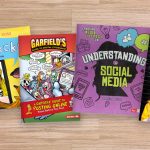I have often wondered how I discovered the writer in me at the age of 40. In my wildest dreams, I never imagined being a writer. But here I am, a published author and a teacher of writing.
We are often told, “Read a lot if you want to write well” and for the most part I agree with that. But being brought up in India, where books rarely served as mirrors to our lived realities, reading didn’t appeal to me until I was much older. School libraries were filled with English books, books by Enid Blyton and Franklin W. Dixon. I occasionally read them. I tried hard to imagine the world of the Famous Five books by Blyton, but it was a far cry from the bustling and hot city of Madras (now Chennai) where I lived with my grandparents in a cramped two-bedroom apartment overlooking the Bay of Bengal.
As far as writing goes, penmanship was valued at my school. My grandfather passed on his prized Pilot fountain pen to me, to take part in a handwriting contest. I won first place and was so proud. I wrote pieces on how I spent my summer vacation or how we celebrated Diwali; topics picked by the teachers. I wrote in my neatest handwriting and always received the comment, “Neat work” with a star drawn in the margin. But I never learned how to write a good story. So, I can safely say that reading and writing didn’t play an important role in my childhood. If reading and writing at school didn’t prepare me to be a writer, then what had?
The answer came to me one day when I was saying aloud a story that had been swirling in my head. I narrated it one way, then another, making sure to really listen to how it sounded. Did it sound like my Thatha, like the stories he told? You see, my grandfather was a master storyteller. On Sunday afternoons, he would gather his grandchildren and tell us stories. He would narrate all kinds of stories: real ones, made-up ones, fantastical ones, funny ones, scary ones, sad ones, and happy ones. I can still hear the rise and fall of his voice, the dramatic pauses, the quiver, the sharpness, the softness, the changes in tone. All these components intrigued me. He made a production of it, and I was transfixed. It dawned on me that it was my grandfather who taught me how to write a good story, one that captivates the reader. It was this storytelling voice that took flight when I finally wrote a publishable story at the age of 40.
As a teacher, I have tried emulating my grandfather. Storytelling is a way of life in my classroom. During Morning Meeting, we share stories of things that matter to us: what makes us happy, sad, joyful, nervous, disappointed, or mad. Like my grandfather, I gather my students ever so often and captivate them with stories from my life. Then I model how storytelling is nothing but oral rehearsal for my writing. And magically the classroom is transformed into one where stories matter, where words matter, where the audience matters. I have had many reluctant writers come to life when the first step is to tell a story. This rehearsal really sets them up for success, and while some kids still have trouble getting the words they say on paper, they know that their stories can move us, making us laugh or cry. It’s a powerful feeling and one that is contagious.
Writing memorializes storytelling; it keeps a story alive for posterity. It spreads it to a wider audience. When children understand this, there is no stopping them.
Storytelling is great oral rehearsal for writing, but it is also so much more. A classroom that has an oral storytelling culture is a classroom where children listen, learn, and celebrate one another. It is a space where children learn to play with language and words, and marvel at each other’s styles of storytelling. It creates a caring and empathetic community, where all stories matter, all voices are heard, and children can talk and write as their authentic selves.
It is important for all children to travel through books, to read books that serve as windows and mirrors. It helps build an awareness and empathy for those different from themselves. It also serves as a comfort when they see their lives reflected in the books they read. Teaching children to compose text as well as the mechanics of writing is necessary, too. But what if it all starts with children sharing their own stories orally. Won’t it create a space where we can all be vulnerable and share our joys and fears, our anxieties and hopes?
Now more than ever, we need a sense of belonging and community. Let’s welcome the art of storytelling into our classrooms, for it is stories that nourish us and give us hope. And it is writing those stories that makes hope contagious.






